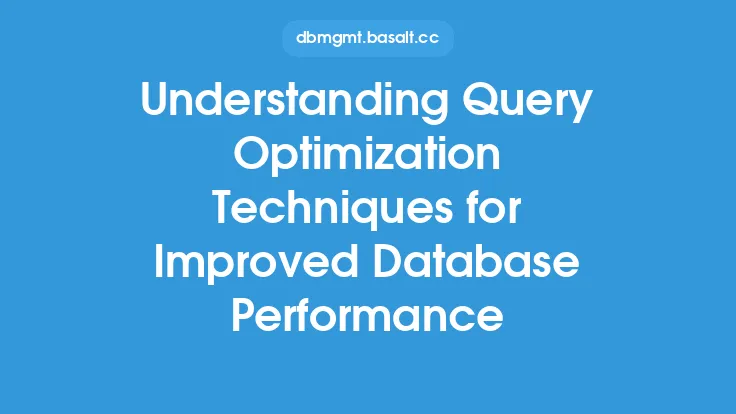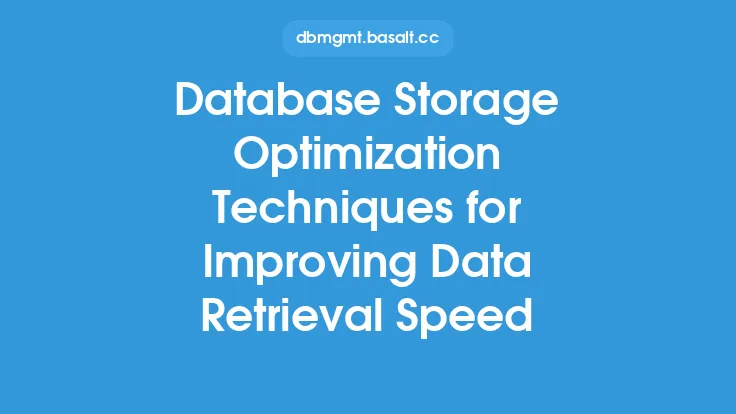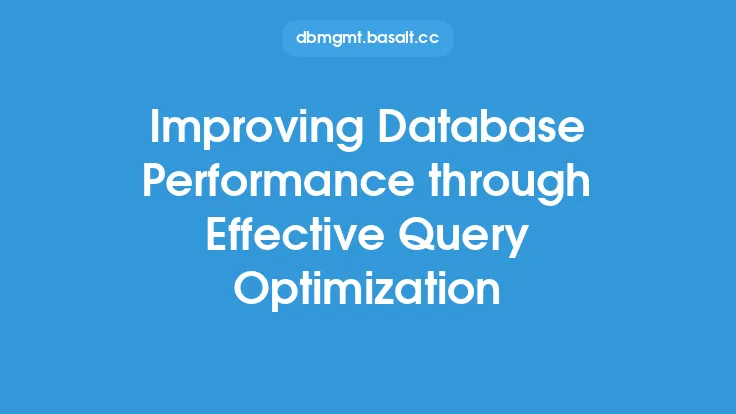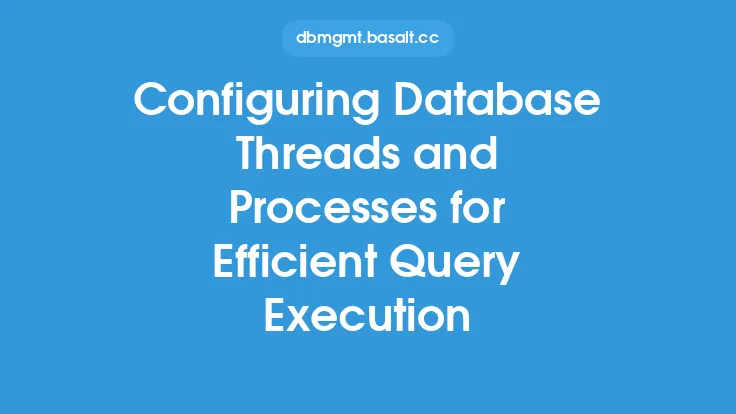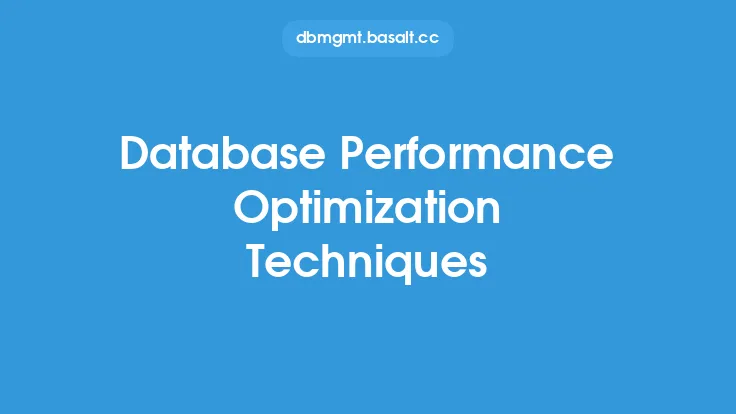Database query optimization is a crucial aspect of database maintenance, as it directly impacts the performance and efficiency of a database. A well-optimized database query can significantly reduce the time it takes to retrieve or manipulate data, resulting in improved user experience and increased productivity. In this article, we will delve into the various techniques used to optimize database queries, exploring the underlying principles and best practices that can help database administrators and developers improve the performance of their databases.
Understanding Query Optimization
Query optimization is the process of analyzing and modifying database queries to improve their performance. This involves identifying the most efficient way to retrieve or manipulate data, taking into account the database schema, indexing, and other factors that can impact query performance. The goal of query optimization is to minimize the time it takes to execute a query, while also reducing the load on the database server and improving overall system performance.
Types of Query Optimization
There are several types of query optimization techniques, each with its own strengths and weaknesses. Some of the most common techniques include:
- Rule-based optimization: This approach involves using a set of predefined rules to optimize queries. These rules are based on the database schema and indexing, and are used to rewrite queries in a more efficient form.
- Cost-based optimization: This approach involves estimating the cost of executing a query, taking into account factors such as the number of rows to be retrieved, the indexing, and the database schema. The query is then optimized to minimize the estimated cost.
- Heuristic-based optimization: This approach involves using heuristics, or rules of thumb, to optimize queries. These heuristics are based on the database schema and indexing, and are used to identify the most efficient way to execute a query.
Query Optimization Techniques
There are several query optimization techniques that can be used to improve the performance of database queries. Some of the most effective techniques include:
- Indexing: Indexing involves creating a data structure that allows the database to quickly locate specific data. Indexing can significantly improve the performance of queries that retrieve data based on a specific column or set of columns.
- Caching: Caching involves storing frequently accessed data in memory, where it can be quickly retrieved. Caching can significantly improve the performance of queries that retrieve data that is frequently accessed.
- Query rewriting: Query rewriting involves rewriting a query to make it more efficient. This can involve simplifying the query, eliminating unnecessary joins or subqueries, and optimizing the order of operations.
- Join ordering: Join ordering involves optimizing the order in which tables are joined. This can significantly improve the performance of queries that involve multiple joins.
- Subquery optimization: Subquery optimization involves optimizing subqueries, which are queries that are nested within other queries. This can involve rewriting the subquery, eliminating unnecessary subqueries, and optimizing the order of operations.
Best Practices for Query Optimization
There are several best practices that can be followed to optimize database queries. Some of the most effective best practices include:
- Use efficient indexing: Indexing can significantly improve the performance of queries that retrieve data based on a specific column or set of columns.
- Avoid using SELECT \*: Using SELECT \* can retrieve unnecessary data, which can slow down the query. Instead, specify the columns that are needed.
- Use efficient join types: The type of join used can significantly impact the performance of a query. For example, inner joins are generally more efficient than outer joins.
- Avoid using correlated subqueries: Correlated subqueries can be slow, as they involve executing a subquery for each row in the outer query. Instead, use joins or derived tables.
- Use query optimization tools: Query optimization tools, such as the query optimizer in SQL Server, can help identify and optimize slow-running queries.
Advanced Query Optimization Techniques
There are several advanced query optimization techniques that can be used to further improve the performance of database queries. Some of the most effective techniques include:
- Partitioning: Partitioning involves dividing a large table into smaller, more manageable pieces. This can significantly improve the performance of queries that retrieve data from a specific partition.
- Data warehousing: Data warehousing involves creating a separate database that is optimized for querying and analysis. This can significantly improve the performance of queries that involve complex analysis and reporting.
- Materialized views: Materialized views involve storing the results of a query in a physical table. This can significantly improve the performance of queries that retrieve data that is frequently accessed.
- Query parallelization: Query parallelization involves executing a query in parallel, using multiple processors or cores. This can significantly improve the performance of queries that involve complex calculations or large amounts of data.
Conclusion
Query optimization is a critical aspect of database maintenance, as it directly impacts the performance and efficiency of a database. By understanding the underlying principles and best practices of query optimization, database administrators and developers can improve the performance of their databases, resulting in improved user experience and increased productivity. Whether using indexing, caching, query rewriting, or advanced techniques such as partitioning and data warehousing, there are many ways to optimize database queries and improve the overall performance of a database.
